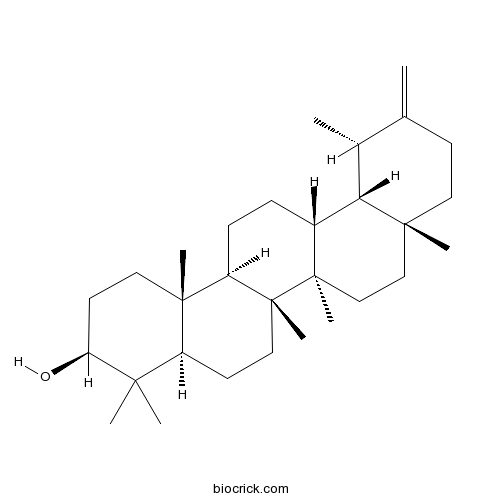Lactuca tatarica
Lactuca tatarica
1. The products in our compound library are selected from thousands of unique natural products; 2. It has the characteristics of diverse structure, diverse sources and wide coverage of activities; 3. Provide information on the activity of products from major journals, patents and research reports around the world, providing theoretical direction and research basis for further research and screening; 4. Free combination according to the type, source, target and disease of natural product; 5. The compound powder is placed in a covered tube and then discharged into a 10 x 10 cryostat; 6. Transport in ice pack or dry ice pack. Please store it at -20 °C as soon as possible after receiving the product, and use it as soon as possible after opening.
Natural products/compounds from Lactuca tatarica
- Cat.No. Product Name CAS Number COA
-
BCN5869
Taraxasterol1059-14-9
Instructions

Sesquiterpenoids from Lactuca tatarica.[Pubmed: 19628027]
A new guaianolide and a new eudesmanolide were isolated from Lactuca tatarica, as well as eight known sesquiterpenoids. The new compounds were elucidated on the basis of spectroscopic methods including IR, HRESIMS, 1D and 2D NMR, and the known compounds were established by comparing their physical data with those of the corresponding compounds in the literature.
In situ gynogenetic haploid plants of chicory (Cichorium intybus L.) after intergeneric hybridization with Cicerbita alpina Walbr.[Pubmed: 24178166]
The possibility of obtaining haploid plants of chicory (Cichorium intybus L.) was investigated through intergeneric hybridization. Chicory plants (industrial chicory and Chioggia) were pollinated with pollen of Lactuca tatarica L. and Cicerbita alpina Walbr. Many achenes contained embryos which were rescued in vitro. Only a few embryos developed into plants which were then acclimatized in soil. Among them, three expressed a chicory phenorype and were haploid.


